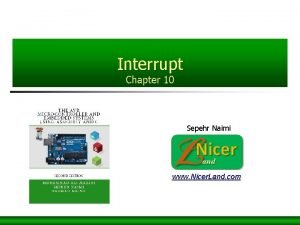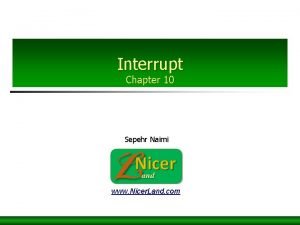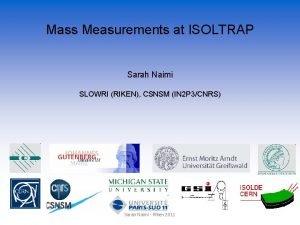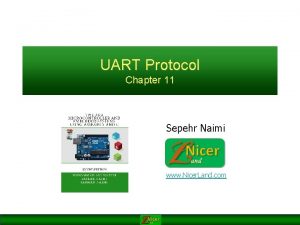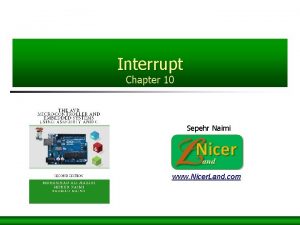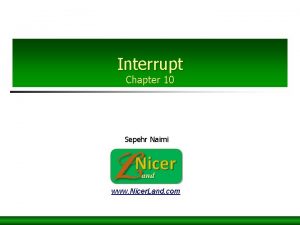SPI Protocol Sepehr Naimi www Nicer Land com












- Slides: 12

SPI Protocol Sepehr Naimi www. Nicer. Land. com

SPI Protocol n n n Synchronous Full-duplex Serial Fast communication For short distances Pins n n SDO (Data Out) SDI (Data In) SCLK (shift clock) CE (chip enable) 2

Master vs. Slave n n Master begins the communication by pulling down the CE pin of slave. Master makes the clock for communication 3

SPI internal circuit n n A shift register in the master and another in the slave By each clock, a bit is shifted out from the master’s shift register into the slave shift register and a bit is shifted from slave to master. 4

Multi-slave communication 5

SPI pins in AVR n n MOSI (Master Out Slave In) MISO (Master In Slave Out) SCK SS 6

Connecting a slave device to an AVR 7

AVR registers n Control register: n n Status Register: n n SPCR (SPI Control Register) SPSR (SPI Status Register) Data Register: n SPDR (SPI Data Register) 8

SPSR (SPI Status Register) n SPIF (SPI Interrupt Flag) n n A serial transfer is completed. The SS pin is driven low in slave mode WCOL (Write Collision) SPI 2 X (Double SPI Speed) 9

SPCR n n n n CPOL CPHA Data Read and Change Time SPI Mode 0 0 Read on rising edge, changed on a falling edge 0 Read on falling edge, changed on a rising edge SPIE 0 (SPI 1 Interrupt Enable) 1 0 Read on falling edge, changed on a rising edge SPI 2 X SPR 1 Read on rising edge, changed on a falling edge SPE 1(SPI 1 Enable) 0 0 DORD (Data Order) 0 1 MSTR (Master) 1 0 CPOL (Clock Polarity) 1 0 1 1 CPHA (Clock Phase) 1 1 SPR 1, SPR 0 : SPI Clock Rate 1 2 SPR 0 3 0 SCK Freq. Fosc/4 1 Fosc/16 0 Fosc/64 1 Fosc/128 0 Fosc/2 (not recommended) 1 Fosc/8 0 Fosc/32 1 Fosc/64 10

Program 1: Sending ‘G’ through SPI as a master #include <avr/io. h> #define MOSI 3 #define SCK 5 #define SS 2 int main (void) { DDRB = (1<<MOSI)|(1<<SCK)|(1<<SS); //MOSI and SCK are output DDRD = 0 x. FF; //Port D is output SPCR = (1<<SPE)|(1<<MSTR)|(1<<SPR 0); //enable SPI as master while(1) //do for ever { PORTB &= ~(1<<SS); //enable slave device SPDR = 'G'; //start transmission while(!(SPSR & (1<<SPIF))); //wait transfer finish PORTD = SPDR; //move received data to PORTD PORTB |= (1<<SS); //disable slave device } return 0; } 11

Program 2: Sending ‘G’ through SPI as a slave #include <avr/io. h> #define MISO 4 int main (void) { DDRD = 0 x. FF; //Port D is output DDRB = (1<<MISO); //MISO is output SPCR = (1<<SPE); //enable SPI as slave while(1) { SPDR = 'G'; while(!(SPSR &(1<<SPIF))); //wait for transfer finish PORTD = SPDR; //move received data to PORTD } return 0; } 12




